Production Year 1994
 Pico Pico Pon | Pico Pico Pon
Pico Pico Pon | Pico Pico Pon
CH539400![]()
ピコピコポン [NHK]
![]()
![]()
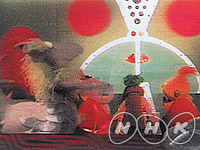
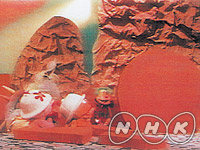
|Length : 15min. x20 |Year : 1994 |
Se trata de una serie de muñecos animados para niños, cuyo fin es familiarizar a los televidentes con los números, formas y cantidades, disfrutando al mismo tiempo de la historia de los muñecos. Todo empieza cuando Pokki y Munmu, abordo de una nave espacial, "Pico pon No." aterrizan en la isla de "Gu-Gu". La divertida e interesante conversación entre los muñecos incentiva la creatividad de los niños, y ayuda a impulsar sus actividades cotidianas.
1. ¿Cómo te llamas?
2. Separando cosas por su clase
3. ¿Cuál es diferente?
4. ¿Qué es?
5. ¿De qué lado tiene más?
6. Enumerando el número
7. El cero
8. Primero, segundo y tercero
9. La misma cantidad
10. ¿Quién es más alto?
11. Comparado de longitudes
12. Pesado y ligero
13. Los vasos y el jugo
14. Derecha e izquierda
15. De frente o la espalda
16. ¿Cuál es siguiente?
17. ¿Qué forma tiene?
18. Conos y triángulos
19. Dibujemos un mapa
20. El tesoro
 The Unsung Experts of Japan | Urushi – The Traditional Art of Japanese Lacquer –
The Unsung Experts of Japan | Urushi – The Traditional Art of Japanese Lacquer –
DC029403![]()
ワザあり!にっぽん | 日本の贅沢!漆の里に甦る浄法寺塗り 岩舘正二・隆親子 [CTV]
![]()
![]()
![]()
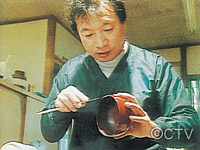
|Length : 27min. |Year : 1994 |
Japanese "urushi" lacquerware is justifiably famous worldwide for its exquisite finish. This program shows every step in the lacquerware process from the painstaking collection of drops of sap from lacquer trees in the hills, to the laborious processing of the sap into lacquer and the creation of the lacquerware itself. With many turning to cheap, imported lacquers, 70-year-old Shoji iwadate and his son Takashi may be among the last craftsmen to practice this traditional art.
 The Unsung Experts of Japan | Wara – The Technique of Wrapping with Straw –
The Unsung Experts of Japan | Wara – The Technique of Wrapping with Straw –
DC029404![]()
ワザあり!にっぽん | 陶磁の浪漫をワラで包む 有田焼荷師・橋本勝 [CTV]
![]()
![]()
![]()
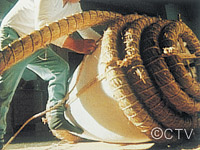
|Length : 27min. |Year : 1994 |
For centuries, straw or "wara" has been used to wrap priceless Arita pottery. Although straw is strong, pliable, readily available, cheap, and environmentally friendly, the technique is unfortunately a dying art. Among the few craftsmen who keep the old traditions alive, 70-year-old Masaru Hashimoto shows how straw can be used for just about anything from the most delicate porcelain to massive pots. This is a fascinating study of a fascinating tradition.
 The Unsung Experts of Japan | Mizuhiki – The Art of Decorative Cords –
The Unsung Experts of Japan | Mizuhiki – The Art of Decorative Cords –
DC029405![]()
ワザあり!にっぽん | 祝いを結ぶ 水引細工・津田剛八郎 千枝 [CTV]
![]()
![]()
![]()
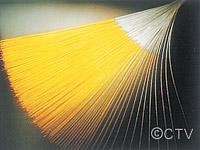
|Length : 27min. |Year : 1994 |
Traditionally, money or gifts are presented wrapped in special hand-made paper bound with decorative strings tied in a stylized knot. These strings are made from coated paper called "mizuhiki", with different colors for different occasions. Nowadays, most "mizuhiki" are made by machines, but there are still a few craftsmen, like Ume Tsuda and her daughter Chie and son-in-law Gohachiro who work together to make creatively designed "mizuhiki" with traditional techniques.
 The Unsung Experts of Japan | The Man in Black – The Hidden Face in Kabuki –
The Unsung Experts of Japan | The Man in Black – The Hidden Face in Kabuki –
DC029406![]()
ワザあり!にっぽん | 宙乗り!早替り!猿之助歌舞伎『八犬伝』 黒子・市川寿猿の世界 [CTV]
![]()
![]()
![]()
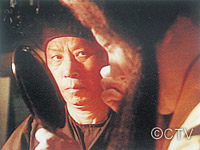
|Length : 27min. |Year : 1994 |
For many, "kabuki" is the soul of Japanese tradition. But there is a lot that goes on behind the colorful spectacle that most people do not know about. This rare glimpse of "kabuki" backstage follows Juen Ichikawa, a "kabuki" actor and "kuroko" or stagehand as he plans, organizes, and manages the theatrical details of a performance by "kabuki" superstar Ennosuke Ichikawa. A very modern Japanese man who even does the housework at home, Juen is a miracle-worker in black in the theater.














